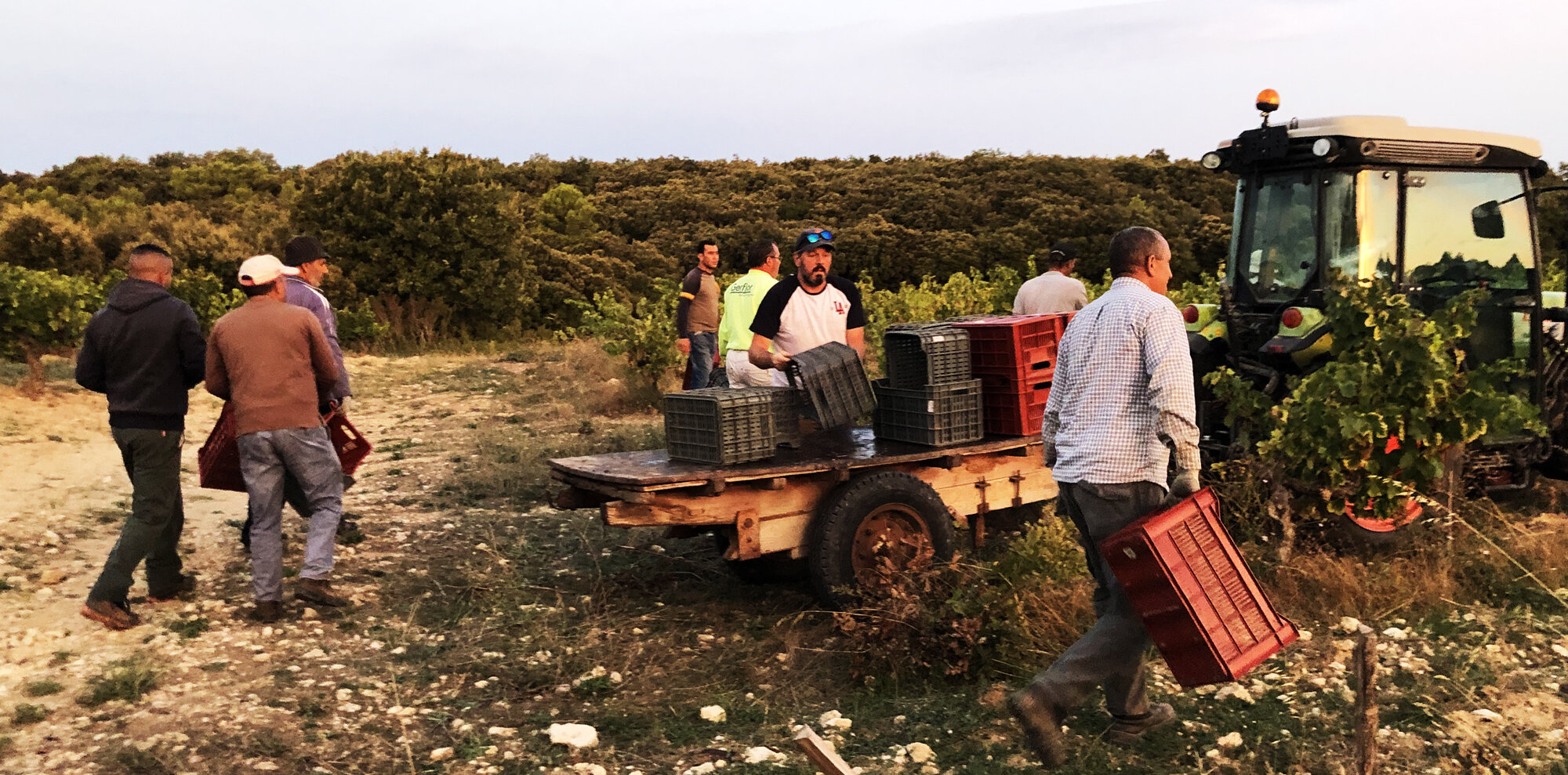
The Harvest
We eat a lot of grapes in the run up to harvest,
tasting the berry maturity during numerous passages through the vineyards as the grapes get close to being fully ripe. This is the deciding factor in when to harvest, with balance being the main priority with a search for fruit, acidity and skin and pip ripeness the key factors.
The patchwork nature of the vineyards
means that the same plots may require picking more than once in order to harvest grapes at their optimum maturity.
The grapes are hand harvested and put into small crates that carry a maximum of 13kg of fruit.
This is in order to carry out careful bunch selection in the vineyard as well as to preserve the fruit and stop any oxidation as it is transferred from the vineyard to the winery.

The Winemaking
Depending on the variety, the stem ripeness and the overall characteristics of the vintage,
we may crush and de-stem the grapes, de-stem only or add whole bunch to the tanks.
Essentially we take each vintage on its merits.
Destemming bunches on arrival at the winery
Alcoholic fermentation takes place in stainless and cement tanks and in general temperatures are kept low in order to accentuate the fruit quality.
Only yeasts that are naturally found in the atmosphere of the winery or on the skins of the grapes are used. Maceration periods are relatively short with the tanks generally being racked as soon as alcoholic fermentation has finished.
Malolactic fermentation and further ageing take place either in 600 litre demi-muids, 228 litre Burgundy barrels or tank, once again depending on the wine and the team’s interpretation of the vintage.
We prefer certain cooperages and oak from particular origins. Come and taste and you will see why!







